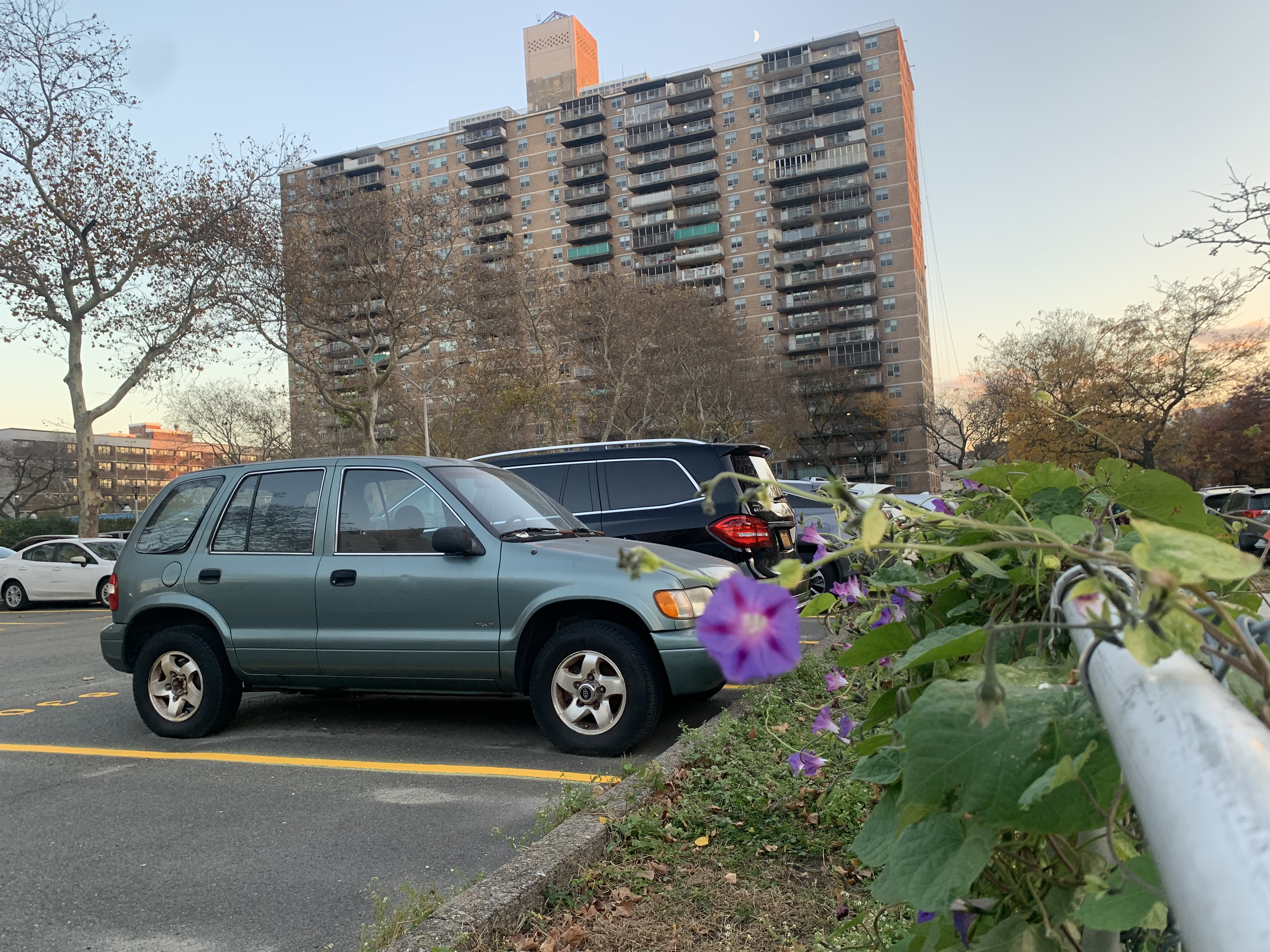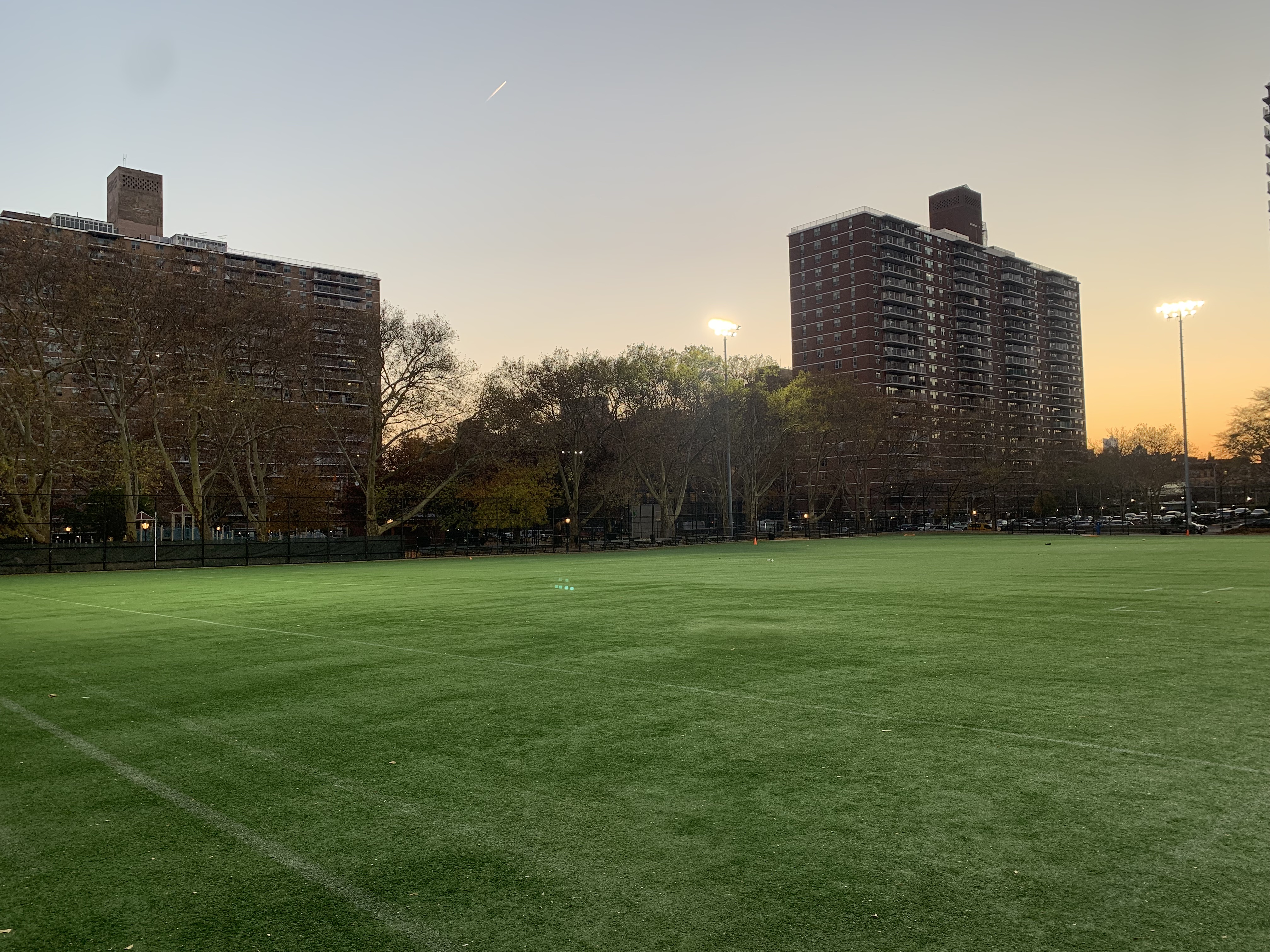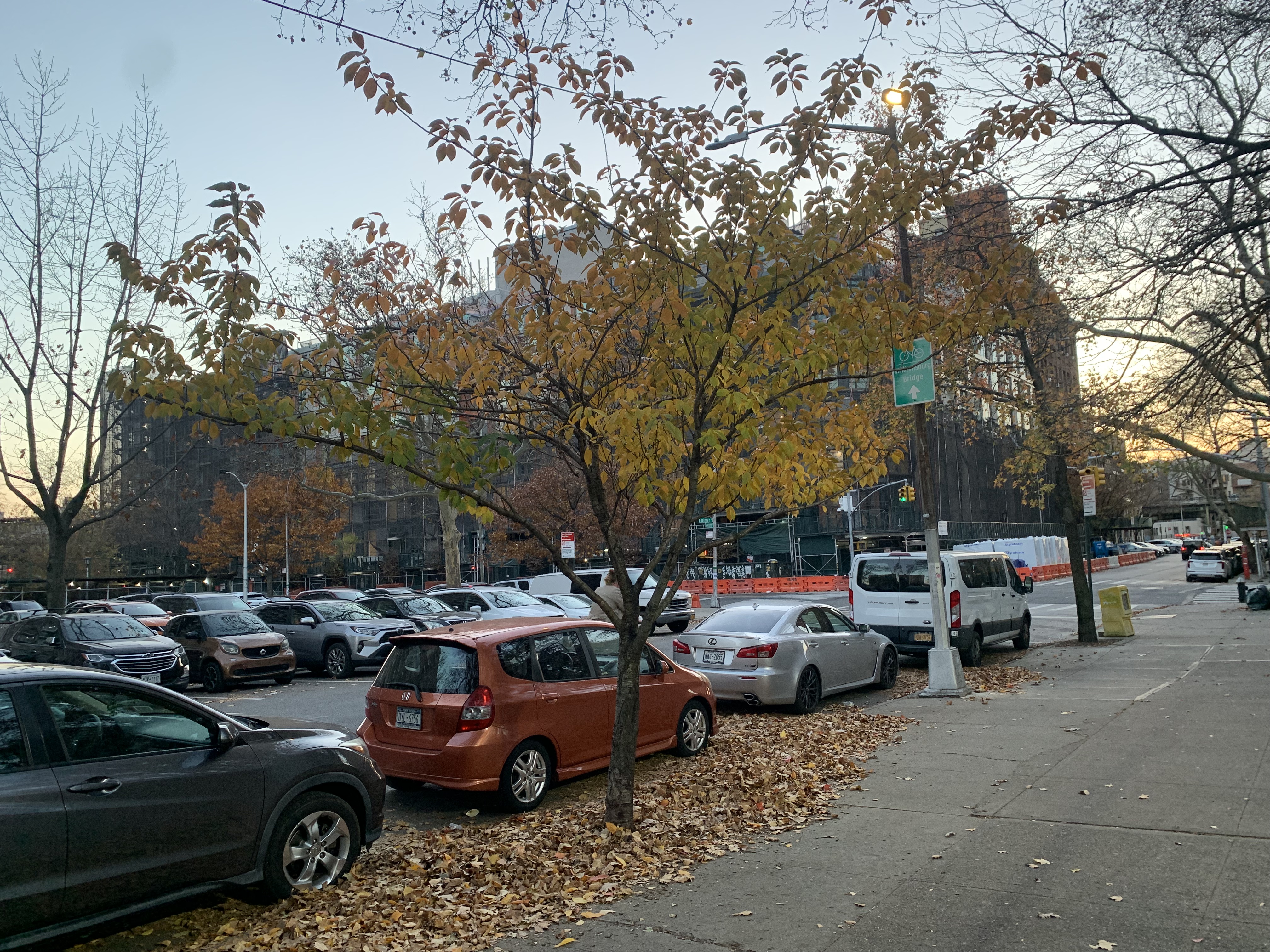Reflection #1



Nature Based Solutions in Lindsay Park: Budget Cuts, Parking Lots, and Speculative Planning
It is decidedly fall in North Brooklyn. This is the third time that I have surveyed the Lindsay Park development and the season change is evident. The leaves are mostly gone from the London Plane and Sugar Gum trees in the area. Piles of leaves are a common site all over the Lindsay Park campus. Leaves are everywhere, especially at Sternberg Park. Sternberg Park is the community park immediately adjacent to Lindsay Park. It’s nestled in between the development on three sides and is very much integrated into its space.
Leaves piled in Lindsay Park are handled by the Lindsay Park Housing corporation’s maintenance staff. The leaves that fall in Sternberg fall under the purview of the NYC Parks Department. This site visit comes days after Mayor Eric Adams has informed New Yorkers about large budget cuts that will inevitably affect every New Yorker. I wonder if the lawn refuse bags filled with leaves will be picked up by sanitation workers or if they’ll simply suffer the elements if the bags are left unaccounted for because of these cuts.
This reflection and visit was done with identifying potential interventions for nature based solutions in the Lindsay Park/Sternberg Park footprint, but the budgets of the state and city are in poor shape. The prospect of state initiated green infrastructure to address the fact that this large, middle income housing development is home to large patches of impermeable surfaces is not a high priority for politicians. A lack of political will does not mean all hope is lost however, it means that any intervention will need to be initiated from the citizen and community level.
As identified in the hydrology reflection, the Lindsay and Sternberg Park combined area is home to many impermeable surfaces, namely parking lots. I speculate that the addition of these parking surfaces is a product of the time that Lindsay Park was developed, the 1950s. This dovetails with the growing risk that was outlined in my midterm. Lindsay Park’s vulnerability to floods is predicted to increase over the next century according to the NYC Flood Mapper tool. Combined with the lack of permeable surfaces, the need to mitigate potential flooding will demand attention. To properly implement nature based solutions, an intervention will need to be embraced by and have respect for the community it will be placed in. I believe that a nature based intervention could be implemented in Lindsay Park as a proactive measure in flood mitigation.
Lindsay Park is a unique case in New York City housing in that it was developed under the Mitchel-Lama housing program. This program used public subsidies to generate privately built affordable housing for middle income families in NYC. At this point in time, Lindsay Park is essentially a seven building co-op. The ownership component is different from your standard renters or homeowners. This makes the owners of Lindsay Park apartments more similar to owners of condominiums than anything else. This similarity opens up an important and unique opportunity: the special assessment. Special assessments are additional, temporary charges for shareholders of a building. The funds raised from an assessment are usually for capital projects. Special assessments provide co-ops and condominiums an alternative manner for implementing nature based solutions in the form of green infrastructure to mitigate flooding. In a city where funds will be difficult to come by because of budgetary constraints, this financing option can be a real asset.
In the specific setting of Lindsay Park, I think it would be a worthwhile endeavor to investigate the feasibility and cost to design and construct green roofed carport structures over Lindsay Park’s parking lots. This is the type of project that The New School academic community could contribute to a local community in New York City. The New School could form an interdisciplinary team that surveys the sites, designs structures, investigates the financing, and prepares literature for community members. If the community sees value in it, they could use the plans and documents that have been drafted. Architectural firms and green roofing organizations could be approached to contribute in collaboration with students. The implementation of a green roofed carport-like structure would vastly improve the area of permeable surfaces in the immediate vicinity and provide cooling benefits to an area that also suffers from the urban heat island effect. Lindsay Park is already home to a robust bird population and to large numbers of pollinators. The addition of more green patches would provide more ecosystem services to both human and non-human actors. The structures would also be able to aid in protecting resident’s automobiles. With heavy rains occurring across eight consecutive weekends in New York City this fall, the likelihood of damage to onboard computers will rise. Anecdotally, I am aware of two individuals in North Brooklyn who had automobiles damaged by standing water this fall. Finally, Lindsay Park also has a maintenance and landscaping staff already. Furthermore, these green spaces could be designed with low maintenance in mind allowing for easier management. With uncertain futures ahead, smaller scale planning and action will be needed to adapt communities to the risk of climate change. Thinking about all of the tools that are available to policymakers will be crucial to minimizing the damage and costs associated with climate change.
***